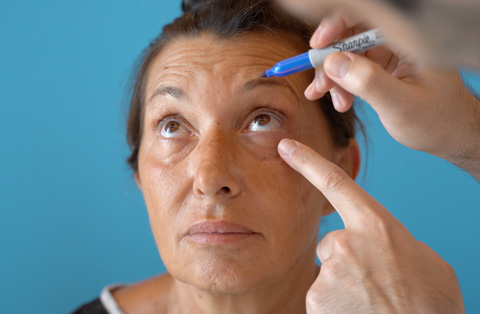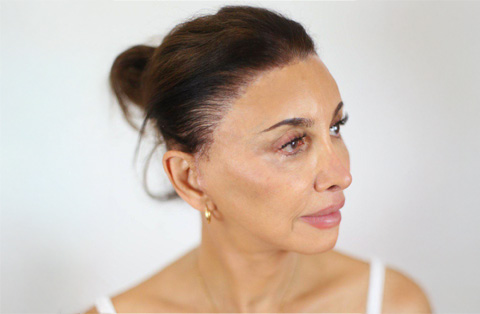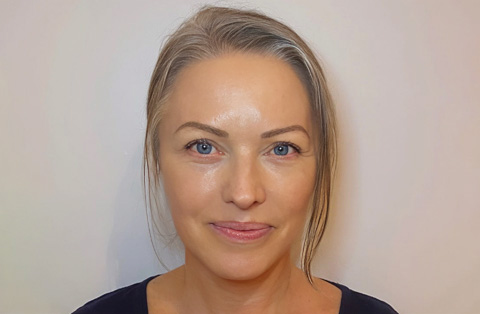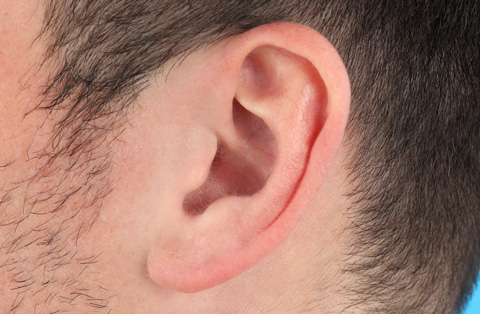Navigating the various signs of aging can be a challenge, and one area that often garners attention is the neck, specifically the condition often referred to as ‘turkey neck’. This term refers to the sagging skin and creases that form around the neck area, and while it’s a normal part of aging, it can impact self-confidence.
If you’ve noticed these changes and are wondering “What is a turkey neck and how do I get rid of it?”, you’ve come to the right place. In this detailed guide, we’ll delve into the causes, signs, and treatments, both non-surgical and surgical, to help you understand your options and make informed decisions.
Whether you’re interested in preventive measures, exercises, or exploring the cost of turkey neck surgery, we’ve got it covered. Let’s embark on this journey to understanding and addressing turkey neck.
What is a turkey neck?
When we talk about ‘turkey neck’, we’re referring to the sagging skin and creases that can form around the neck area as we age, resembling that of a turkey’s wattle. This change in our skin is a completely normal part of the aging process, but it’s one of the more visible signs and can be a point of self-consciousness for many people.
What causes a turkey neck?
A turkey neck can be caused by various factors including:
Age:
As we grow older, our skin naturally loses elasticity and collagen, which can lead to sagging skin and wrinkles. This is a major factor contributing to the development of turkey neck.
Sun exposure:
Prolonged and unprotected exposure to the sun can damage the skin and speed up the aging process, leading to the development of wrinkles and sagging skin.
Weight fluctuations:
Rapid weight gain and loss can stretch the skin, reducing its elasticity and causing it to sag.
Genetics:
Our genetic makeup can influence how quickly and severely we develop signs of aging, including a turkey neck.
Lifestyle factors:
Habits such as smoking and poor diet can also contribute to premature skin aging and the development of turkey neck.
At what age does turkey neck start to appear?
The age at which a turkey neck starts to appear can vary significantly from person to person. Generally, signs of aging, including sagging skin around the neck, start to appear around the age of 40.
However, lifestyle, genetics, and environmental factors can influence when these signs become noticeable.
How do I get rid of turkey neck?
Getting rid of turkey neck can be approached through a combination of preventive measures, non-invasive treatments, and surgical options, depending on the severity of the condition and individual preferences.
Can exercises help a turkey neck?
Yes, specific exercises can help to tone the muscles in your neck, which may reduce the appearance of a turkey neck. These exercises focus on strengthening the platysma, the muscle that runs down the sides of your neck.
Exercises that treat turkey neck
Some exercises that can help with a turkey neck include:
- Neck stretch: Tilt your head back to look at the ceiling and press your tongue to the roof of your mouth to engage the neck muscles.
- Collar bone backup: Sit with your back straight. Keeping your head level with the floor, bring your head back several inches to feel muscles on either side of your throat contract and relax.
- Kiss the sky: Tilt your head back to look at the ceiling and pretend to kiss the ceiling by puckering your lips and stretching them as far away from your face as possible.
Remember, while exercises can help, they might not eliminate the turkey neck entirely, especially in cases of significant sagging skin.
Nonsurgical treatments for a turkey neck
Several non-surgical treatments can improve the appearance of a turkey neck:
- Topical treatments: Certain creams and serums containing retinol can promote collagen production, helping to tighten the skin.
- Thermage: This treatment uses radiofrequency technology to heat the deeper layers of the skin, promoting collagen production.
- Ultherapy: Ultrasound technology is used in this treatment to lift and tighten loose skin.
- Kybella: An injectable treatment that helps reduce fat below the chin and tighten loose skin.
Surgeries that treat turkey neck
For more severe cases or when non-surgical treatments don’t give the desired results, surgical options might be considered:
Neck lift:
A surgical procedure that removes excess skin and tightens underlying muscles to improve the contour of the neck and jawline.
Liposuction:
A procedure to remove excess fat from the neck region, often combined with a neck lift.
Before and after pictures
Before and after pictures are beneficial for getting a realistic understanding of the results you can expect from different treatments. These are usually provided during your consultation with the specialist.
What is the best turkey neck treatment option for me?
Choosing the best treatment option for your turkey neck depends on multiple factors including your age, skin condition, the severity of the sagging, your overall health, and personal preferences. A consultation with a qualified and experienced specialist is essential to make the right decision.
Schedule your free online consultation now!
FAQ
Will losing weight help turkey neck?
Weight loss can help reduce the appearance of a turkey neck in some cases, especially if excess fat is contributing to the problem. However, rapid weight loss can also cause the skin to sag, exacerbating the turkey neck.
How do I permanently get rid of turkey neck?
While non-surgical treatments can significantly improve the appearance of a turkey neck, surgical procedures such as a neck lift or liposuction provide the most permanent solution.
Why do I suddenly have a turkey neck?
The appearance of a turkey neck can seem sudden due to factors such as rapid weight loss or gain, sudden aging due to sun damage or lifestyle habits, or even the natural process of aging.
Is it possible to get rid of saggy turkey neck naturally?
While exercises and a healthy lifestyle can help improve the appearance of a turkey neck, they may not completely eliminate significant sagging. Non-invasive treatments or surgery might be necessary for more substantial improvements.
This article is not intended to replace professional medical advice, but to provide information on the possible treatments for turkey neck. Always consult with a healthcare professional for a proper diagnosis and treatment options.






